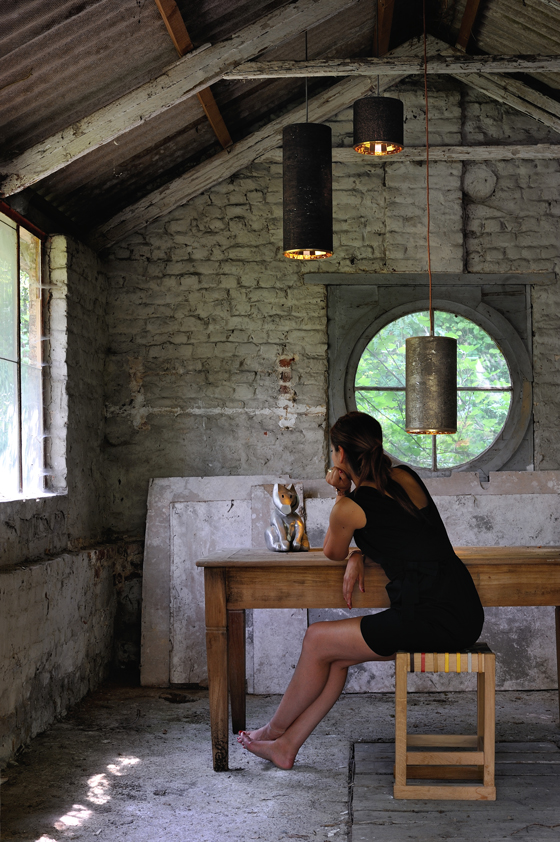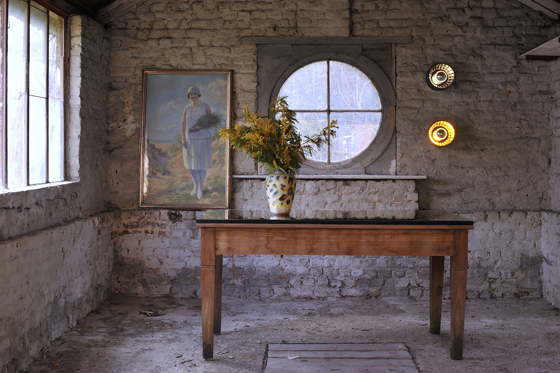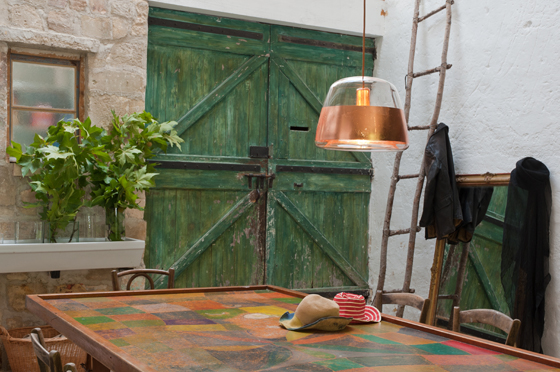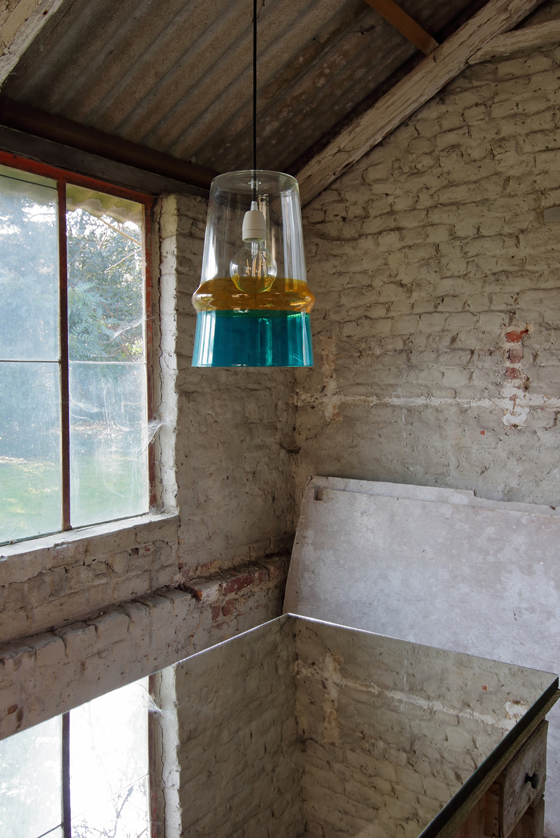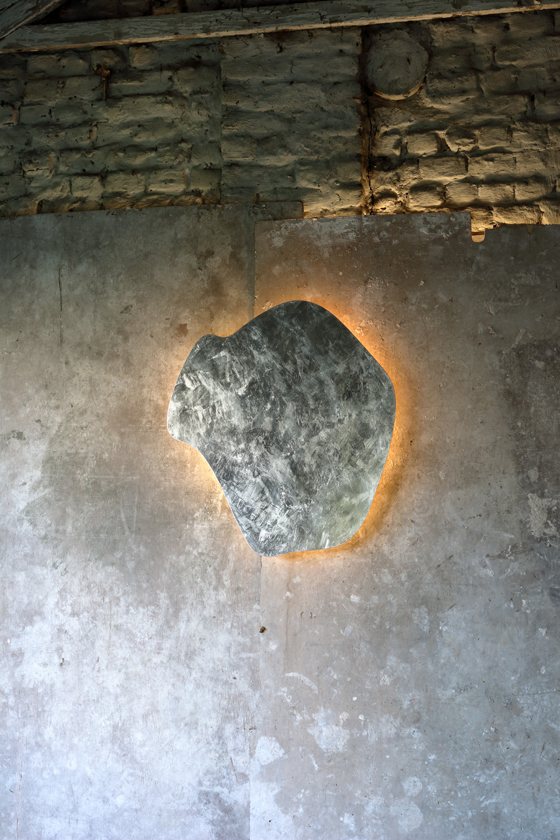Where the hell did poetry go?: Hind Rabii
Brand story by Dominic Lutyens
London, Royaume-Uni
27.09.16
Moroccan-born, Belgian-based industrial designer HIND RABII gets all lyrical about light.
Both rich-looking and ethereal, Hind Rabii’s Ice Absolute light juxtaposes transparent glass with a band of copper, counterbalancing opacity with transparency
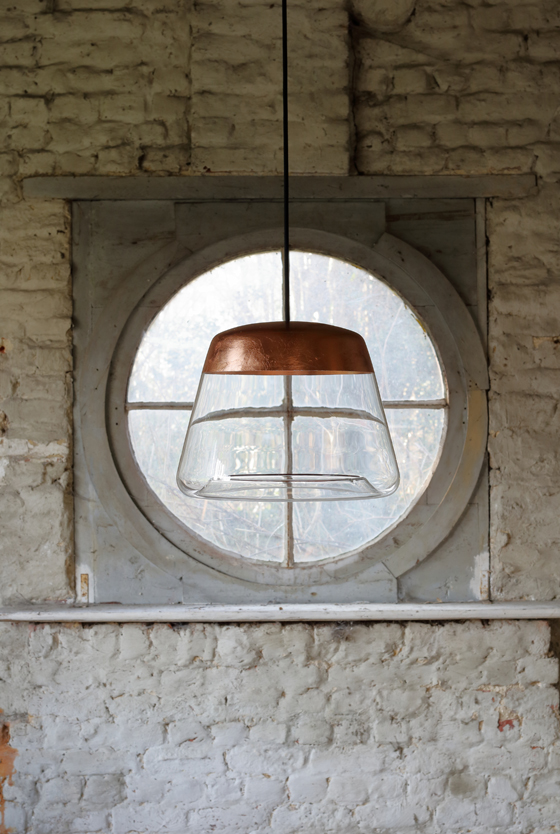
Both rich-looking and ethereal, Hind Rabii’s Ice Absolute light juxtaposes transparent glass with a band of copper, counterbalancing opacity with transparency
×Fashion, art and nature all inspire Belgium-based industrial designer Hind Rabii. These might be unlikely influences on industrial design, but then Rabii is no ordinary lighting designer. She might have studied industrial engineering at the Institut Supérieur Industriel in Verviers in eastern Belgium, but she doesn’t put technology on a pedestal.
‘Technology is always integrated into our creations, but it’s a means of creating our designs, never an end in itself,’ she asserts. ‘Lighting designers have traditionally relied heavily on technology, resulting in a technological exhibitionism that has distanced products from human beings,’ continues this maverick designer, who expresses her views passionately and forcefully. She believes this fetishisation of technology and functionalism has suppressed the poetic, emotional elements of design. ‘Our engineer friends brought us solutions that lack any element of fantasy. And we’ve readily adopted them. My question is: where the hell did poetry go?’
Top: Hind Rabii in the building in Stembert, Belgium, where her lights are manufactured. Shown here, her Reflector Drop lights. Centre: The company’s Reflector Wall light. Bottom: Rabii’s Tension pendant lights, which combine glossy and matt surfaces
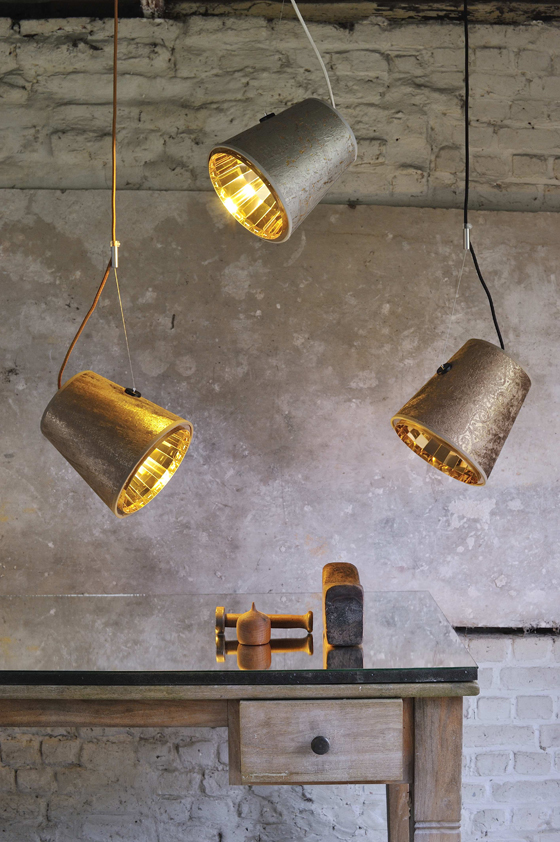
Top: Hind Rabii in the building in Stembert, Belgium, where her lights are manufactured. Shown here, her Reflector Drop lights. Centre: The company’s Reflector Wall light. Bottom: Rabii’s Tension pendant lights, which combine glossy and matt surfaces
×Rabii, who was born in Rabat, Morocco and set up her studio in the town of Stembert, near Verviers, in 1997, is on a mission to rediscover and celebrate the poetic qualities of lighting. Her collections of wall, table, floor and pendant lights, many produced in collaboration with Luc Vincent – formerly a design director at the studios of architects Jean Nouvel and Ricardo Bofill – are made using a rich, eclectic spectrum of materials.
Her versatile, height-adjustable Bel d’I pendant lights comprise transparent or opaque glass shades decorated with copper or chrome rings or bands of vibrant, pop colours; some incorporate smaller shades made of a pleated fabric. Her wall lamps come in unexpected forms and colours. These include her biomorphic Yaya lights that resemble stones with veined surfaces. Her other wall lights form clusters of bubbles in shiny, reflective metals or look comparatively traditional with their cylindrical, conical or rectangular shades in rich hues, such as kingfisher blue, copper, bronze or gold.
Top and above: Two versions of Rabii’s Ice Reflector pendant light – one in clear glass and a warm gold finish, the other in glass with a silver band
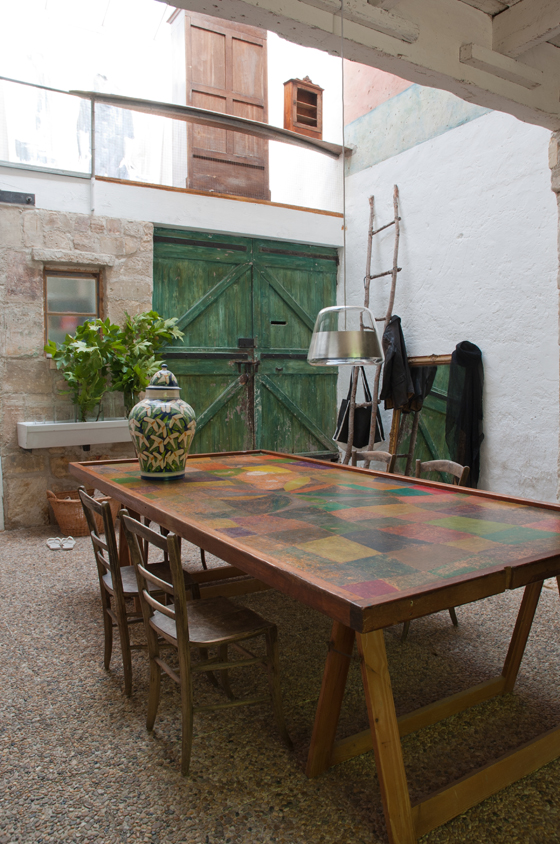
Top and above: Two versions of Rabii’s Ice Reflector pendant light – one in clear glass and a warm gold finish, the other in glass with a silver band
×Her table lamps flout conventions, thanks to their unusual forms and eye-catching juxtapositions of materials: her Belle d’I table lights boast Belgian or Carrara marble bases, while her Ice lamps team clear glass with copper or gold leaf. Their forms are unpredictable, sometimes spherical, sometimes resembling enlarged light bulbs or, as with her design Anna Belle with its turned wooden base and crisply minimalist white shade, recalling archetypal table lights.
Hind Rabii creates up to four or five new designs a year, sometimes augmenting existing collections with new pieces to ensure they feel ‘contemporary’. The designs take ‘24 hours to 24 months’ to produce. ‘The time taken to create the prototype from the initial idea is greatly reduced by my husband, Michael Orban, a trained engineer, who manages the company with me,’ says Rabii. ‘He is very good at understanding what I want to achieve, at finding intelligent technical solutions that correspond with my ideas.’ The finished designs – 80 per cent of which are exported – grace private homes, hotels and restaurants.
Top and above: The company’s Belle d’I Color and Belle d’I Chic pendant lights come in myriad jewel-bright colours, including turquoise and amber, and several metallic tones
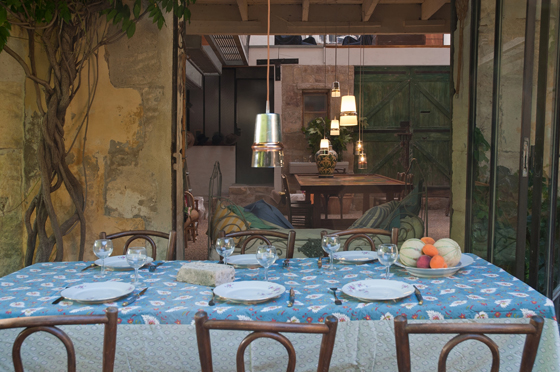
Top and above: The company’s Belle d’I Color and Belle d’I Chic pendant lights come in myriad jewel-bright colours, including turquoise and amber, and several metallic tones
×For Rabii, the true attraction of lighting is light itself – its atmospheric, nuanced qualities — as well as the dramatic interplay between light and shadow. ‘Light and shade, the contrasts between them, have always inspired me,’ she enthuses. ‘There are two ways to approach architecture and design today. Some people lie low, make compromises that favour neutrality, erase contrasts and hide the realities of modern life. But I prefer to see the world as it is and emphasise shadow, light and colour in order to provoke reactions of both happiness and sadness.’
She is keen to stress that lighting is an extension of natural light in its myriad forms: ‘The qualities of lighting have always been defined by the sun and the moon. In Belgium, the lack of strong, natural light has made me compensate for this. Creation often springs from a feeling that something is missing.’ Indeed, Rabii believes that her dual identity – being Moroccan yet living in northern Europe – has stood her in good stead: ‘It gives me a unique, rare creativity. My emotions have always been in harmony with my feelings of openness, my love of modernity and willingness to explore things freely.’
Top and above: Nature is a big influence on Rabii’s unpredictable designs. This is particularly evident in her Yaya lights with their organic forms. Golden indirect light emanates from their irregular edges

Top and above: Nature is a big influence on Rabii’s unpredictable designs. This is particularly evident in her Yaya lights with their organic forms. Golden indirect light emanates from their irregular edges
×But she also feels a strong affinity with Stembert, and its rural environment: ‘There’s a feeling of balance in nature that allows me to develop Hind Rabii with great peace of mind, far from the hustle and bustle of towns. And working with local people ensures well-controlled manufacturing. I like being close to the production processes, although some components are made elsewhere in Europe – for example, our glass ones come from Italy and steel ones are supplied by other Belgian companies.’
Yet her influences are extremely wide-ranging and multifaceted, springing from culture – chiefly art and fashion – as much as from nature. She’s inspired by fashionistas Isabel Marant, Azzedine Alaïa, Prada, Balenciaga and Jil Sander – ‘a mix of classical and rock ‘n’ roll styles’ – as well as by artists ranging from Turner, Matisse and Edward Hopper to Mark Rothko and David Hockney. She was also greatly moved by Swiss artist Ugo Rondinone’s 2016, nature-inspired exhibition called Becoming Soil, held at the Carré d’Art gallery in Nimes.
The Anna Belle table lamp collection, which pairs a crisply minimalist white shade with a more organic wood base. This versatile line plays with proportions, thanks to its shades and bases in various shapes and sizes

The Anna Belle table lamp collection, which pairs a crisply minimalist white shade with a more organic wood base. This versatile line plays with proportions, thanks to its shades and bases in various shapes and sizes
×Overall, Rabii believes that her company’s future growth is guaranteed by its individualism and fluid, forward-looking mindset: ‘Many leading brands founded in the 1950s and 60s have become trapped in old habits. But Hind Rabii is destined to become one of the world’s leading contemporary lighting brands because it has taken a unique, personal route.’
© Architonic

